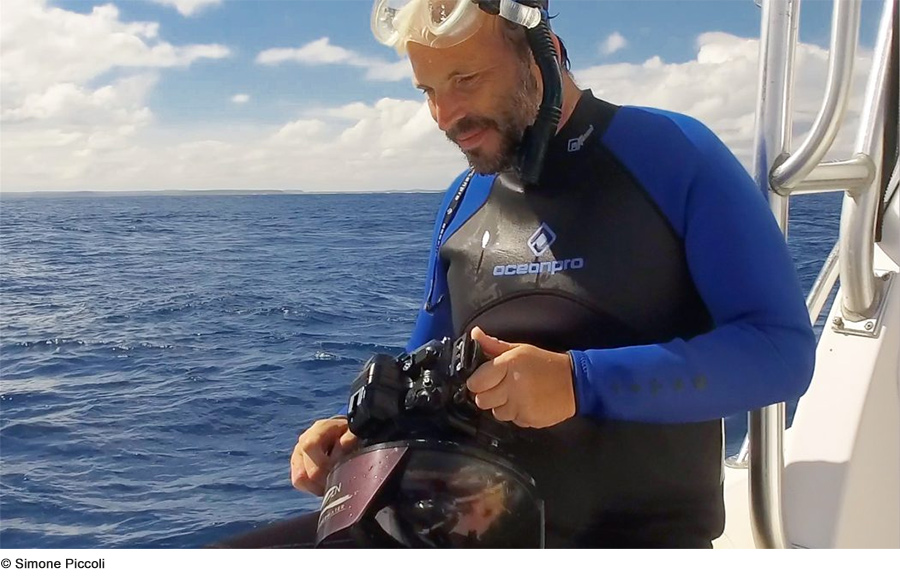Photographs by Prince Hussain Aga Khan
CORPO SANTO HOTEL - LISBON
Largo do Corpo Santo, 25
1200-129 Lisboa
Permanent display
On the occasion of the 2022 United Nations Ocean Conference, Lisbon, Portugal, two venues presented a selection of underwater photographs by Prince Hussain Aga Khan: The Ismaili Centre, Lisbon, and One Sustainable Ocean, an official side event accredited by the United Nations Ocean Conference, Pavilion of Portugal, Lisbon.
To extend this event and relay Prince Hussain’s photographic plea in favor of the preservation of our oceans, CORPO SANTO HOTEL has acquired 13 prints by Prince Hussain. All of the proceeds from the sale of prints by Prince Hussain are donated, via Focused on Nature, to shark, cetacean or sea turtle conservation.
PRINCE HUSSAIN AGA KHAN
An avid tropical fish hobbyist since the age of five and a reptile and amphibian enthusiast for nearly as long, Hussain Aga Khan developed a keen interest in conservation at a young age and began scuba diving at 14. He started travelling to the tropics frequently after secondary school and began taking photographs of fauna and flora on a trip to the Brazilian Amazon in 1996.
Multiple photographic expeditions, often organized jointly with scientists or professional photographers, have led him to constitute extraordinary archives, covering various geographical areas and types of habitats as well as a large number of marine and terrestrial species.
His exhibitions, shown internationally, aim to inspire admiration for wildlife and therefore the desire to protect it.
Collections of his photographs have also been published in four books, Animal Voyage (2004), Diving into Wildlife (2015), Fragile Beauty and The Living Sea (2022).
FOCUSED ON NATURE
Whilst the goal of Hussain’s photography has always been to help people fall in love with nature, inspire people to change behaviours and encourage them to educate others, FON was born out of the idea that raising awareness and engaging the public with some environmental education might not suffice. Hence the creation of a fund to finance some of the best wildlife charities in the world for particular species and ecosystems of interest.
Handpicked and vetted through a process of consultation with FON’s expert, committed advisers and contacts – or by literature review – organizations working on the conservation of sharks, cetaceans, mobulid rays, African elephants, rhinoceroses, rainforests and apes receive yearly donations.
Grantees include the Shark Conservation Fund and Fins Attached, the Manta Trust, Whale and Dolphin Conservation and the Wild Dolphin Project, The Rainforest Trust and Re:wild, the Wildlife Conservation Society and Sheldrick Wildlife Trust, as well as Oceana and the Jane Goodall Institute.
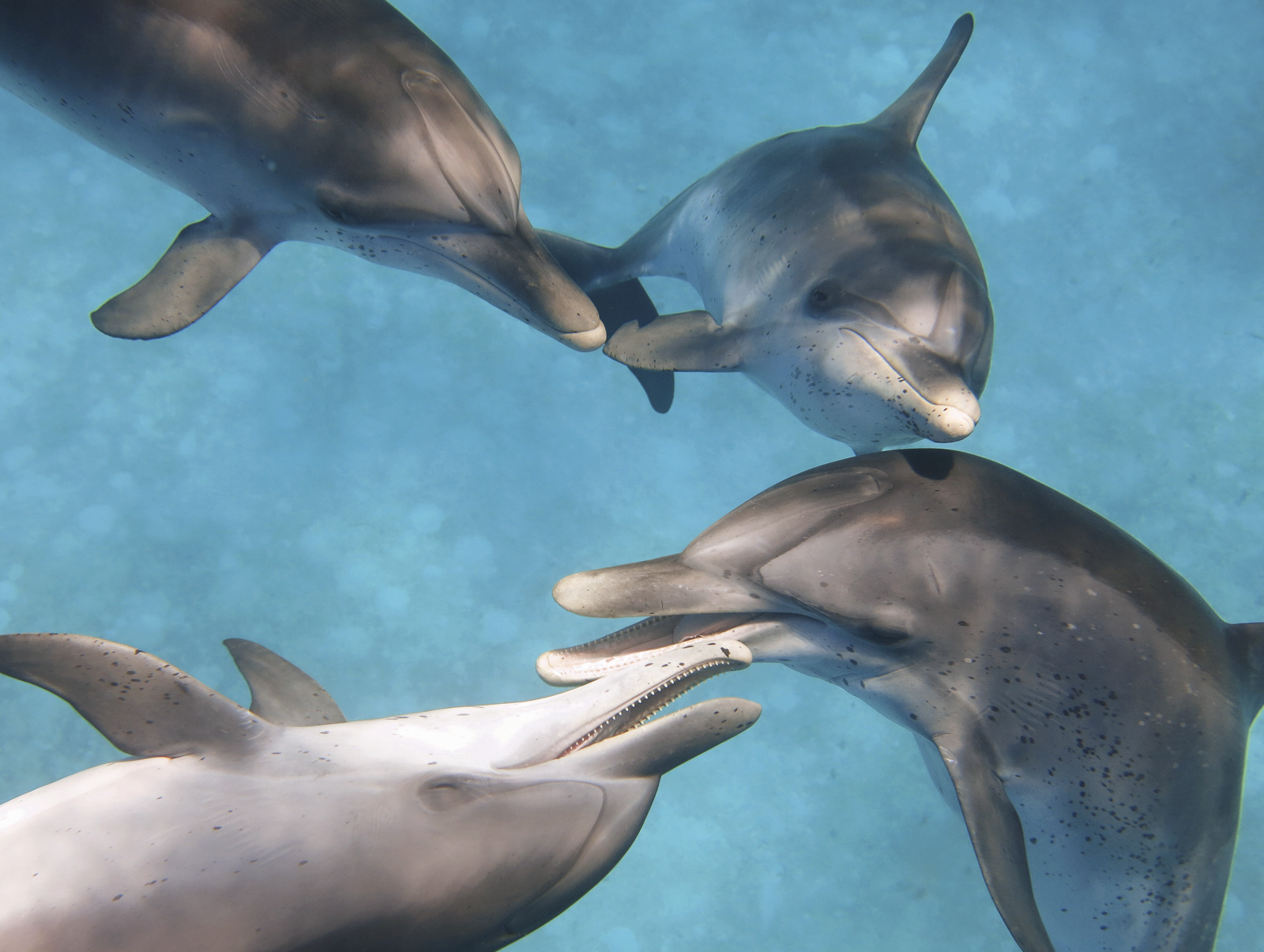
Young spotted dolphins playing, Bimini, the Bahamas, July 2014

Bar jacks ahead of -- and a remora below -- "Lady hook" the Tiger Shark
Tiger Beach, Grand Bahama, July 2014
Like most of the tiger sharks that come in for feeding at Tiger Beach, Lady Hook is female.
She was my first ever tiger shark and she had a large hook in her mouth.
The fish in front of her are not pilot fish, which are black and white; they are young bar jacks.
Tiger Beach is not a beach at all. It’s a large area of shallow water with a sandy bottom frequented by a large number of tiger sharks.
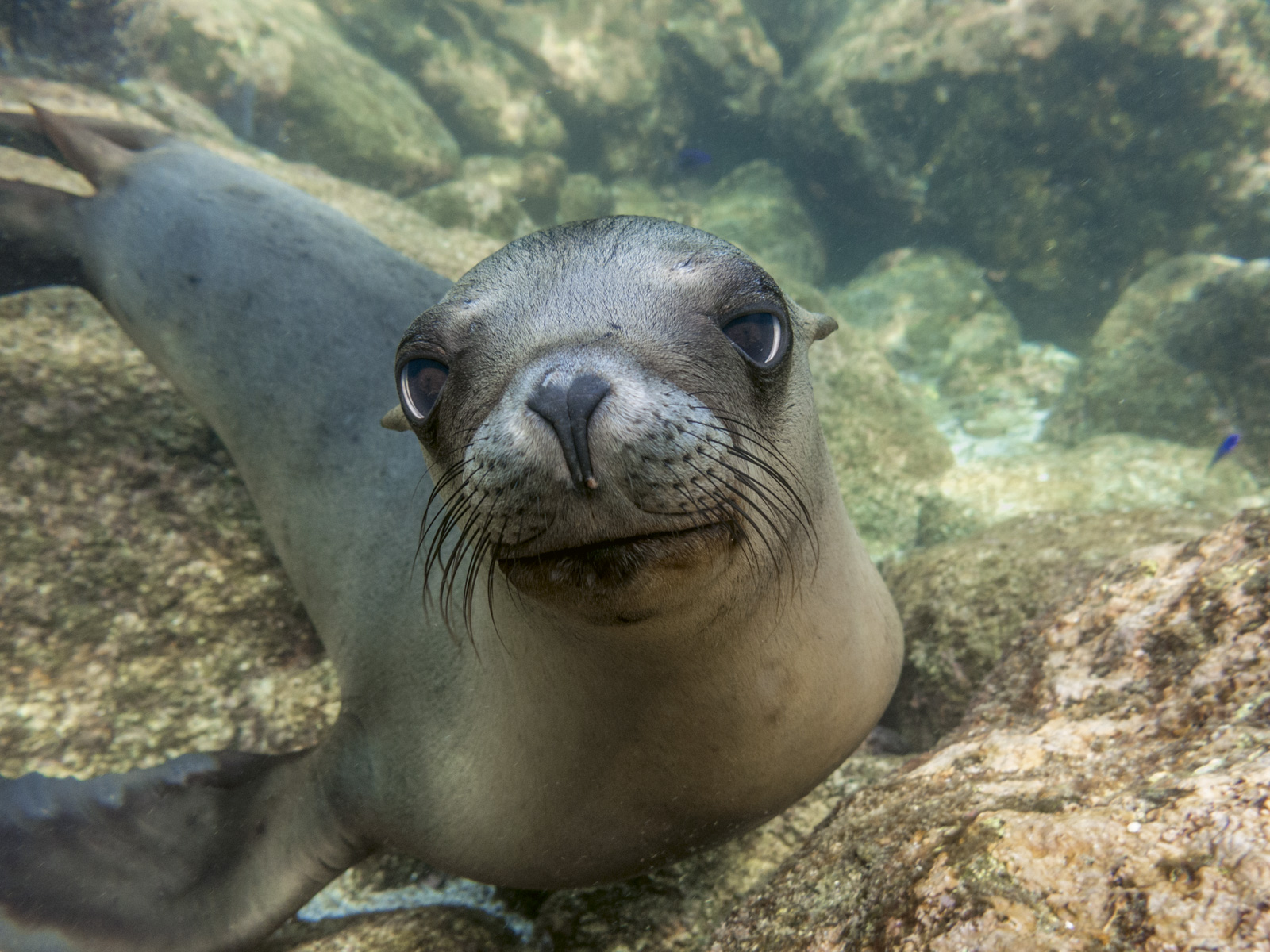
Doe-eyed sea lion pup or ‘Isa lion’ who played with me for an hour
Los Islotes, close to La Paz, Mexico, January 2014
She looked just like my dog, Isabella—‘Isa’!
Los Islotes is home to a famous sea lion colony with hundreds of animals—including the most inquisitive, sweet and mischievous pups you will ever meet—visited daily by dozens of snorkelers and divers.
This pup and I played together for over an hour. Every time it surfaced, I followed it. Every time I descended, it followed me. It was like an adoring puppy—an overenthusiastic playmate. It sat on my back and played with my tank. It pulled at my remaining strands of hair. It tugged on my mask, swam all around me, bending and twisting my gear. I was compelled to break the ‘no touching’ rule! It let me rub its back, then its side ... and then its stomach. Eventually, I could even scratch its throat— except for the fact that it took my fingers in its mouth and gently nibbled on them every time.
This was the sweetest animal you’ve ever seen! Playful, fun, excited, endearing, enthusiastic, curious. Trusting… and generous with its time! It was such an amazing and lengthy encounter, the bond so strong, it felt like the start of falling in love! I was literally miserable, floored, feeling the physical pain of heartbreak, my chest sunken in, when it wasn’t there on the next dive.
One interesting thing about this frame, which I immediately hung in my apartment after the trip, is that it was one of the very last photographs I saw while reviewing my images on the boat. It was the happiest surprise! Nearly everything I’d seen up until that point was fairly mediocre, failed to capture the excitement and emotion of the experience or to please the eye. Then all of a sudden, at the very end of my review (one of maybe the last six images), this picture appeared. And it couldn’t have been nicer.
The sea lions at Los Islotes, which I’ve visited seven times now, are truly amusing and amazing.
As with so many animals, humpback whales included, the young are usually the most fun.
This encounter was undoubtedly one of my top five of all time. Absolutely unforgettable.

Coming from all directions with speed
Spinner dolphins at Sataya, Egypt, in early December 2016
The spinner dolphins at Sataya, a tiny reef in the middle of nowhere which protects a bay in which spinner dolphins congregate, have become quite famous because they are habituated to human presence, can be found quite easily in the small bay, and are amazing to swim among.
Sometimes you see 80 dolphins in a tight-knit group. Sometimes you get close to a small number — an offshoot — of 6 to 12 individuals.
Sometimes the dolphins don’t want you there, stay 20 meters down and constantly swim away.
Other times you might be lucky enough to have dozens of spinners close to you and right at the surface.
Regardless of numbers and interactions, every hour in the water with dolphins — any dolphins — seems nearly miraculous, perfect dream or fantasy.
Sataya in Egypt, with its spinner dolphins, and Bimini in the Bahamas, with its Atlantic spotted dolphins, are 2 of my favorite places in the world, and the only locations I know of (though there may well be others) where one can swim with large numbers of confident, curious, beautiful (all dolphins are beautiful) habituated dolphins.
The idea that if you go into the water when you see dolphins they will come and play with you is largely a fallacy, an urban legend, a myth, a children’s story. Wild dolphins want nothing to do with you! Nineteen times out of 20 wild dolphins will swim as fast and as far away from you as they possibly can. And whilst this may seem like an enormous letdown — a broken dream or ruined myth — it is precisely what makes Sataya and Bimini so special.
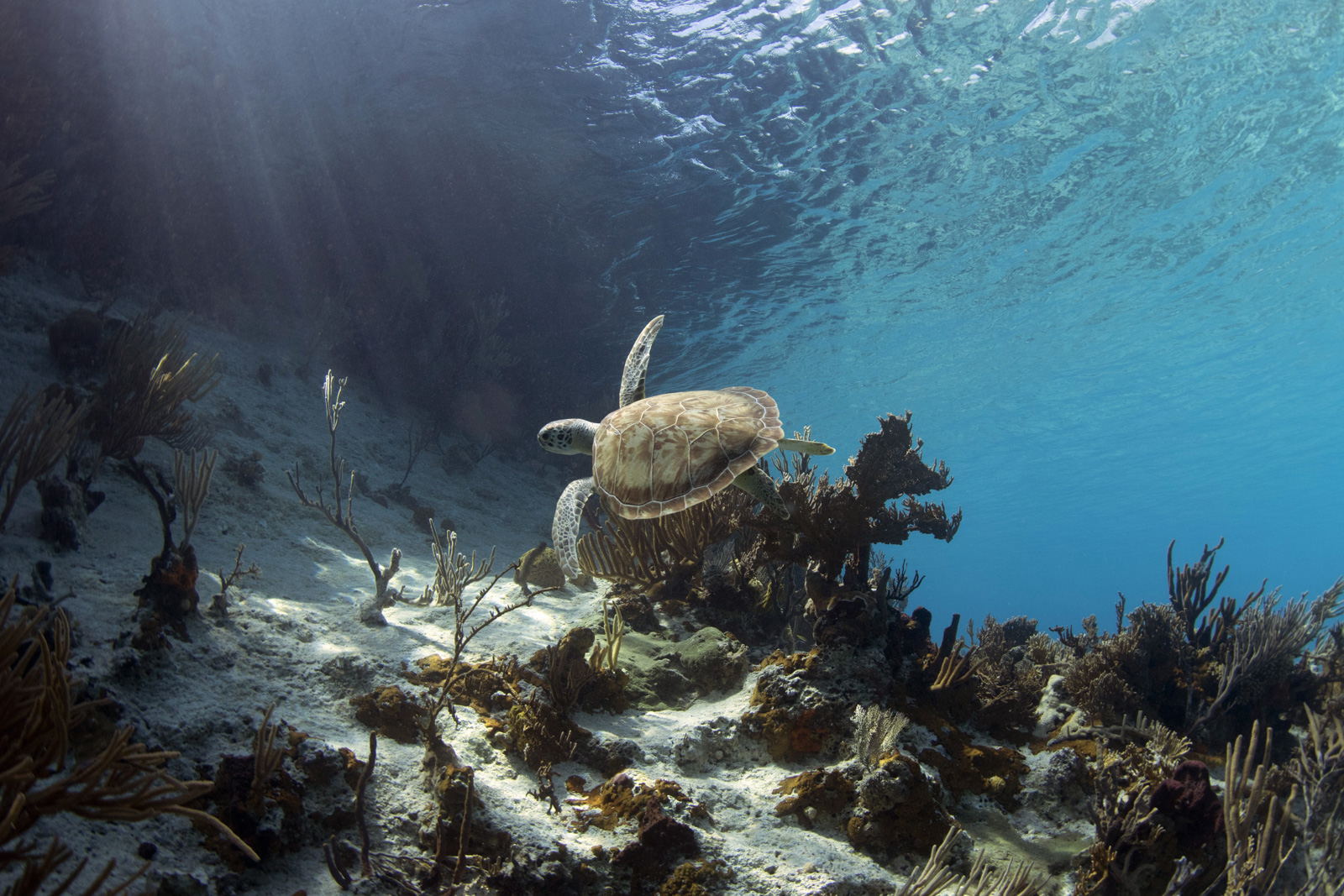
Medium-sized green turtle with a beautiful shell I affectionately call “Matilda” in surface light rays at the site called The Aquarium in the Exumas, April 2017
I visit Matilda 20-25 times a year; we have a good working relationship!
She is a phenomenal model. Not shy at all, on a lucky day she’ll let you swim with her, very close, for half an hour or more. "The Aquarium” is a very shallow site, so your air lasts a long time — more than long enough for a lengthy swim with Matilda or one of her reptilian friends.
Green turtles, like five out of six of the other sea turtle species, are endangered. But I believe greens are the most common. Shell color varies greatly among regions and animals. Some green turtle shells seem virtually black. In a few Hawaiian bays there are turtles rumored to have whitish shells. Barnacles and algae sometimes grow on shells, making some look darker and/or dirtier than others…
The green turtles with the nicest shells I see in the Bahamas, such as the one in this photograph, tend to be small or medium size — so presumably on the young side.
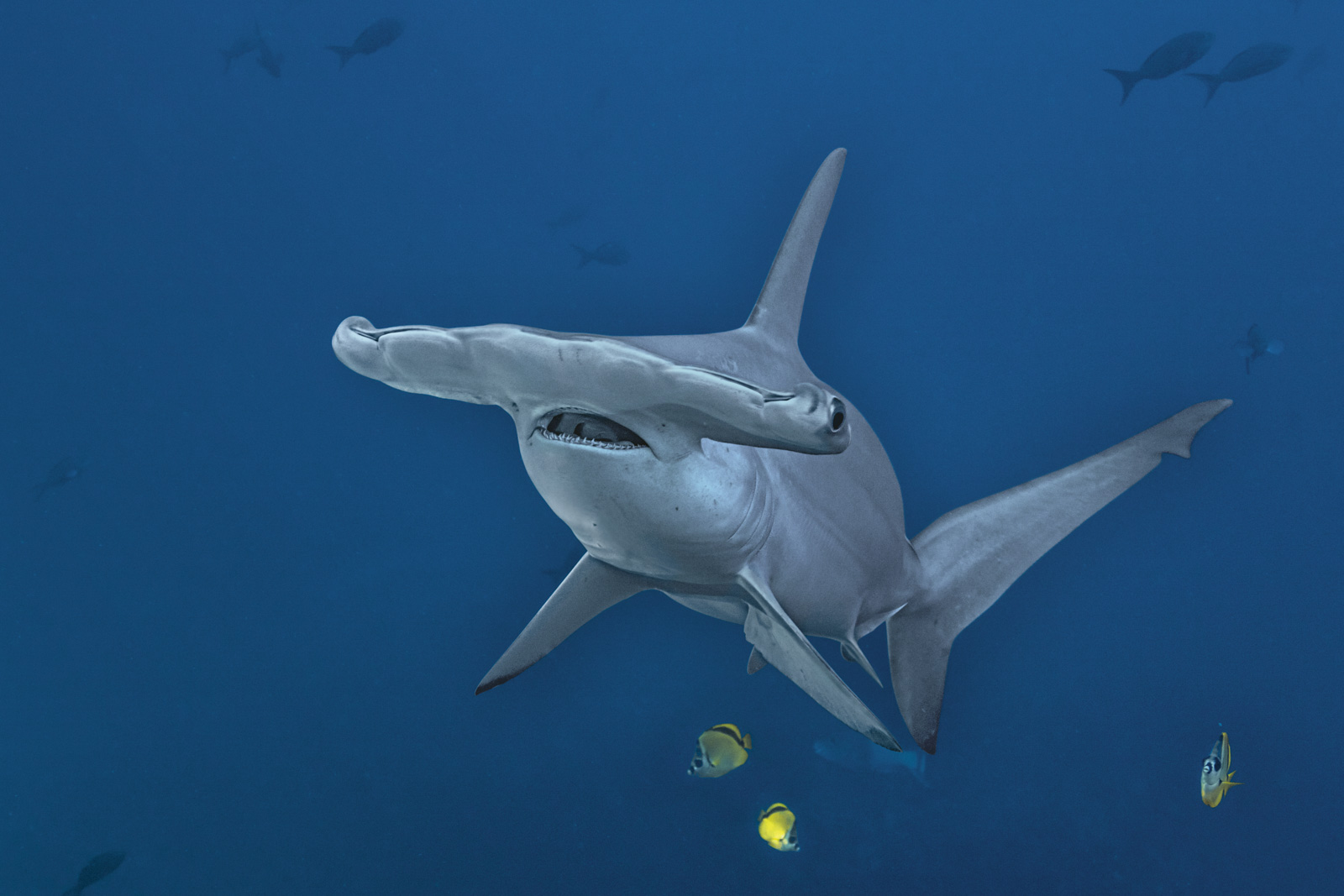
A scalloped hammerhead rises up the slope at the famed Manuelita site
Isla del Coco, Costa Rica, June 2017
We all had to hold our breaths for much of the Manuelita dives—so as not to scare the shy hammerheads away with our bubbles. It was hard to get them close and also take good pictures.
Isla del Coco is, according to Sylvia Earle, ‘one of the sharkiest places on Earth’! It is stunning there. I was privileged to join an expedition with Sylvia and her Mission Blue team a few years ago. Isla del Coco is a protected Costa Rican island full of rainforests, with waterfalls pouring down rock faces into the ocean, its waters a very rich ecosystem with schools of large and pelagic fish like tuna swimming through and hundreds and hundreds of scalloped hammerheads.
Galapagos sharks and whitetip reef sharks also abound. Since the water started getting warmer a few years ago, tiger sharks have also started showing up.
Plenty of other dive sites exist (Punta Maria, where the image of the scarred Galapagos shark was taken, and Halcyon, which is very deep and where the currents can be treacherous, come to mind), but by far the best site for hammerheads is a fairly shallow reef (20 metres), with rows of rocky ledges you can sit or crouch on, known as Manuelita.
The hammerheads are cleaned there by barber fish, and they swim around and climb up and down the reef vertically, as well.
Hammerheads are notoriously skittish and stay far away from divers. So, to get good photos—not to deter the sharks from coming close—divers must hold their breaths. All of us on these dives at Manuelita were doing our very best not to breathe out at the wrong time, avoiding eruptions of bubbles that would scare the sharks away.
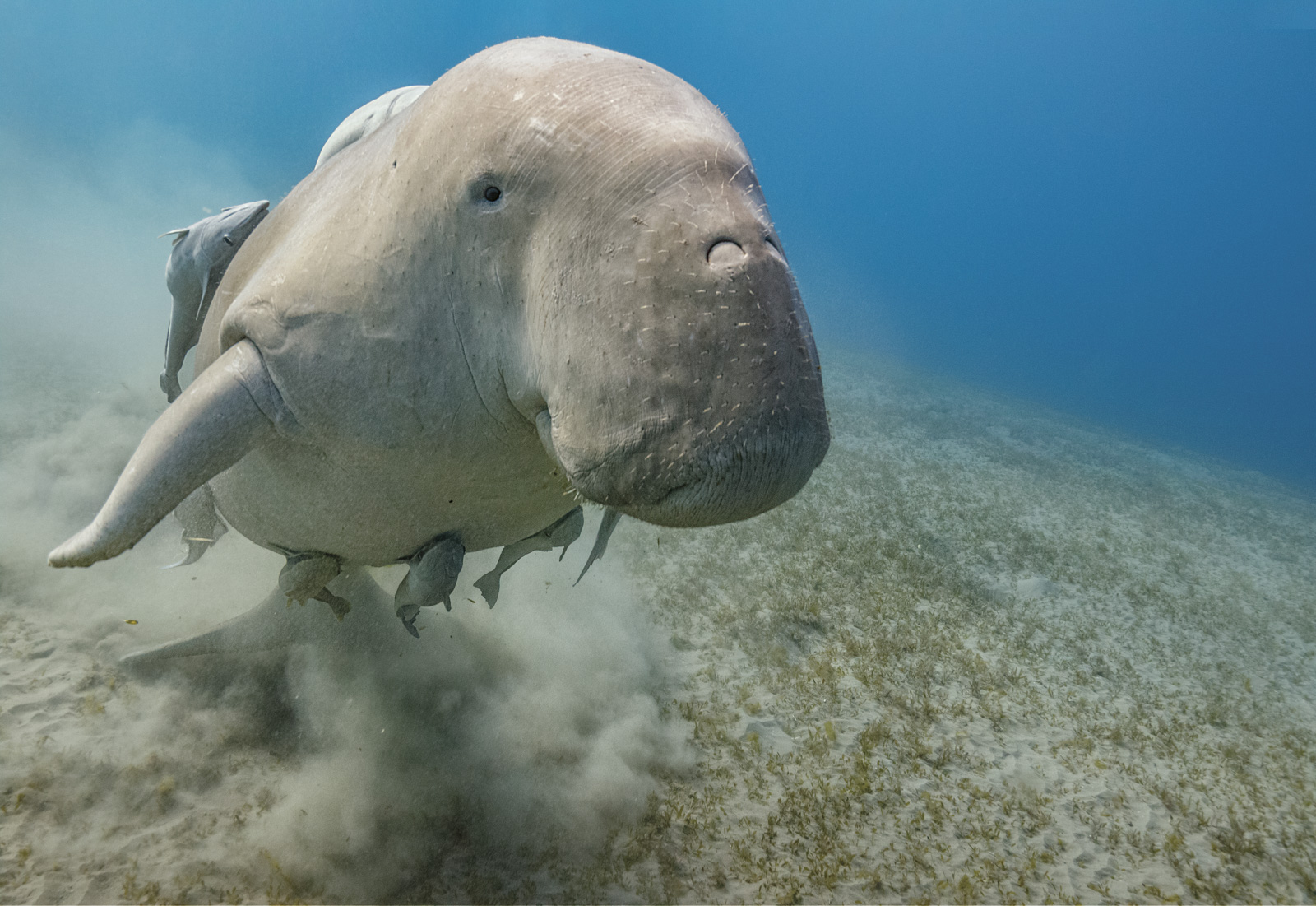
Famous resident male dugong at Marsa Mubarak in Egypt, December 2017
A voracious goliath with a herbaceous appetite. A creature with features so ridiculous you might laugh.
With valves for nostrils, pinhole ears, beady eyes and a flat face with moustache and beard, this 3-meter long animal, basically 300 kilos of fat, was moving at a snail’s pace. And yet, he had us hyperventilating as he led us all around his gigantic bay in a crazy current.
He spends the entire time grazing on seagrass when he isn’t travelling to and from the surface — or breathing there.
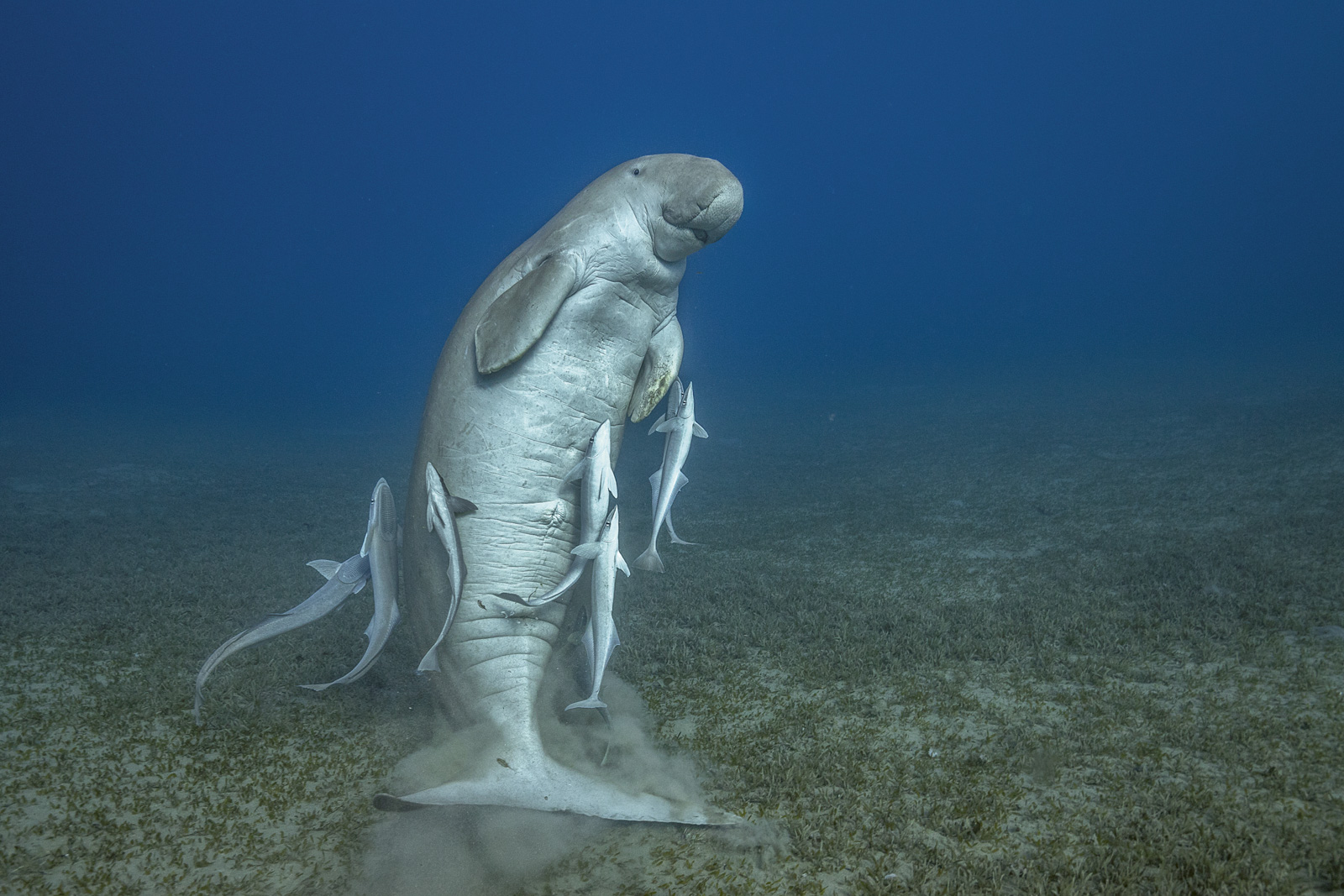
The famous young male dugong at Marsa Mubarak goes upright after a long seagrass snack!
It seemed for a few seconds like he was trying to shake off his remoras as well.
Marsa Mubarak, Egypt, December 2017
This is one of the frames in my portfolio that appeals to people the most—and the first FONASSOCIATION Instagram post to garner more than 400 likes, accumulating over 550 of them.
We were very lucky, Simo, Jim and I, to get two dives completely alone with this character, after a first dive during which he was surrounded or, rather, crowded out by about eight snorkelers, four other divers and us.
This animal was one of the most interesting I have ever encountered. So fat, so bizarre... original, hungry and slow.
Unfortunately, this marine mammal may be a victim of his own success—drawing in more tourists than might otherwise be desirable and, in so doing, rendering his lifestyle both less appealing and less natural/wild than it might otherwise be.
It’s hard to believe that the mermaid legend was born from sea cows—either manatees or dugongs. History books specify that the Spanish sailors who found the New World had not seen any women for many months and so, by the time they came across a manatee, they might have imagined it a pretty girl with a fish tail!

Moving mummy hug
La Paz, Mexico, August 2018
There were about 8 sea lions in that location, all moving at different speeds and in different directions. But this duo seemed organized and even purposeful. The hug lasted seconds or less.
It was completely unexpected. I took about twelve shots… This is the best one; it’s just a shame that there isn’t more space between the animals’ tails and the top of the frame.
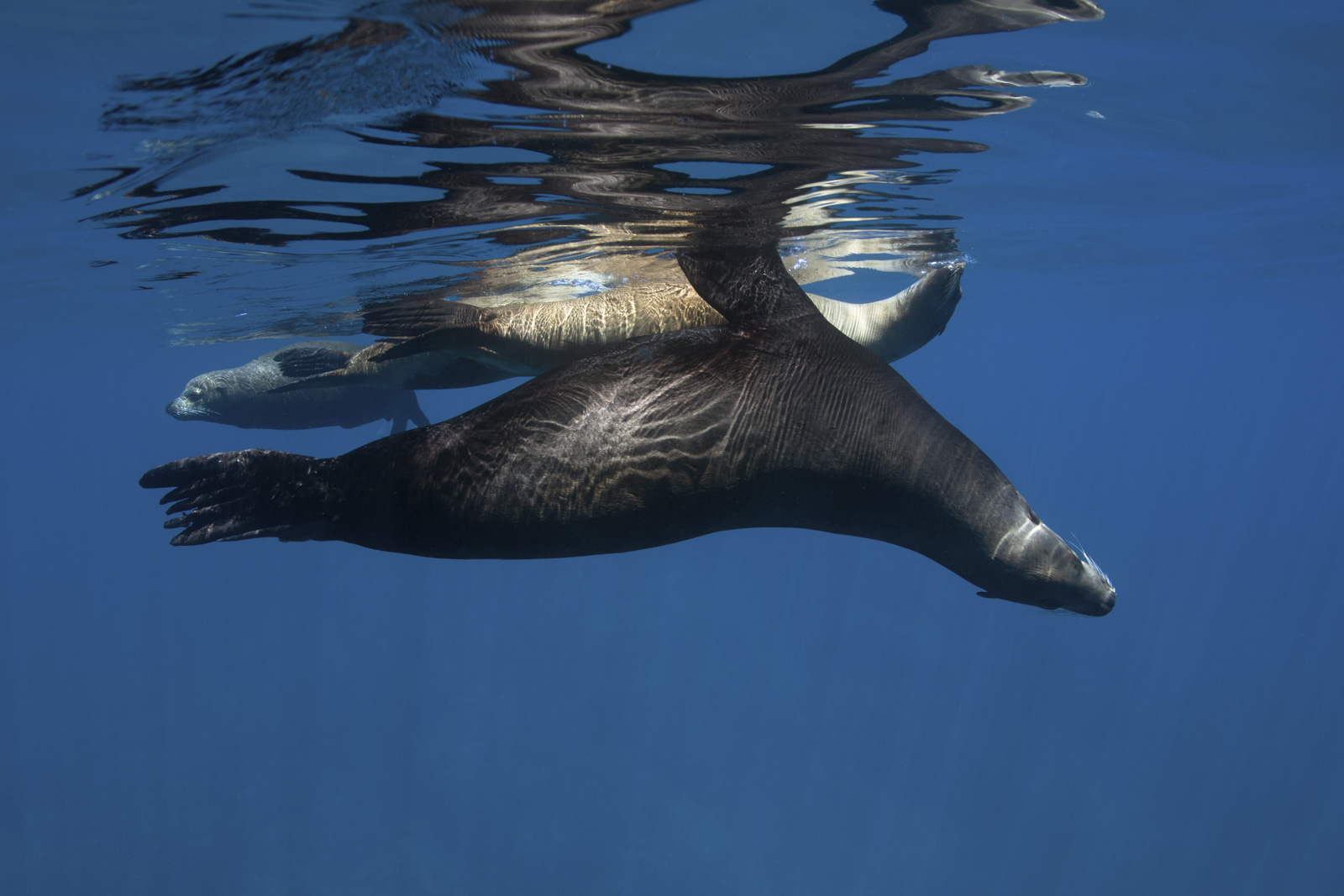
Sea Lion family at the surface close to La Paz, Mexico, August 2018
They let me move around them for minutes…
My friends and I had been diving with sea lions for several days by then. But many of my images were a bit blurry – sea lions are FAST and move unpredictably. You can’t guess where or in what position they’ll be a few seconds after you plan a shot.
Despite wonderful opportunities nearly no shots were great.
But this particular morning we stumbled onto something special.
It was a family of pinnipeds just sitting at the surface, resting and joyful. Sea lions, like dolphins, nearly always look joyful.
There were two or three adults and one smaller individual. Perhaps two parents and a child or two parents, a child and a friend.
I got very close to them indeed, but still hesitated a bit: adult males protect and defend their mates and offspring. Sometimes vehemently.
But these guys were very calm. No one seemed bothered at all. Napping and dreaming, floating about.
I stayed about 4 meters away and photographed them for a number of minutes.
FINALLY I got good shots of sea lions in La Paz – and not at Los Islotes, my usual spot – which made up for the hundreds of mediocre images from the days before.
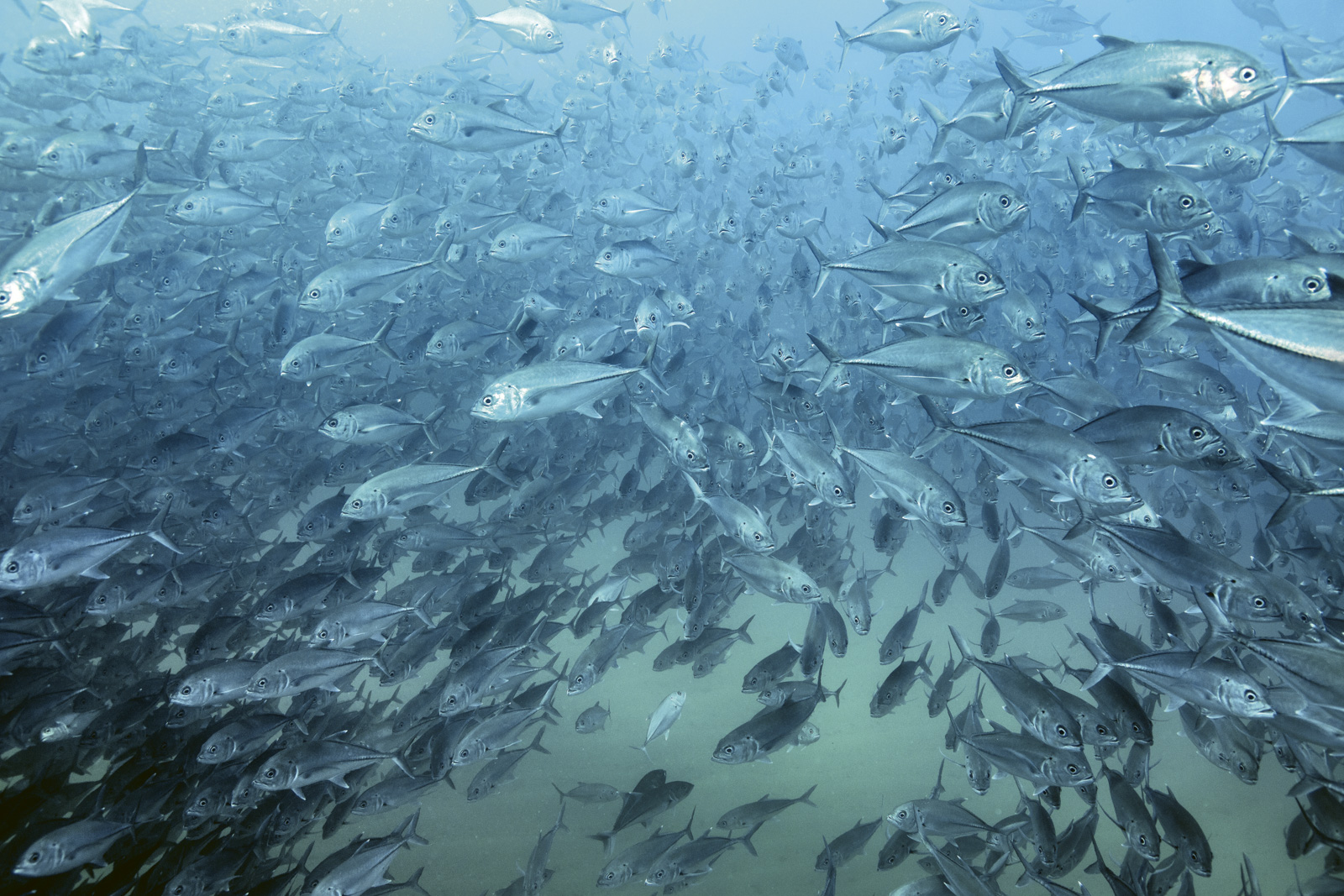
Part of the gigantic school of bigeye jacks in Cabo Pulmo
Mexico, August 2018
The jacks are probably the most famous attraction in Pulmo. There are THOUSANDS of them, forming a gigantic, mobile mass. They stay in the same general area all the time … and the guides and captains tell each other exactly where they were last seen. It’s fairly easy to spot this enormous school from the surface.
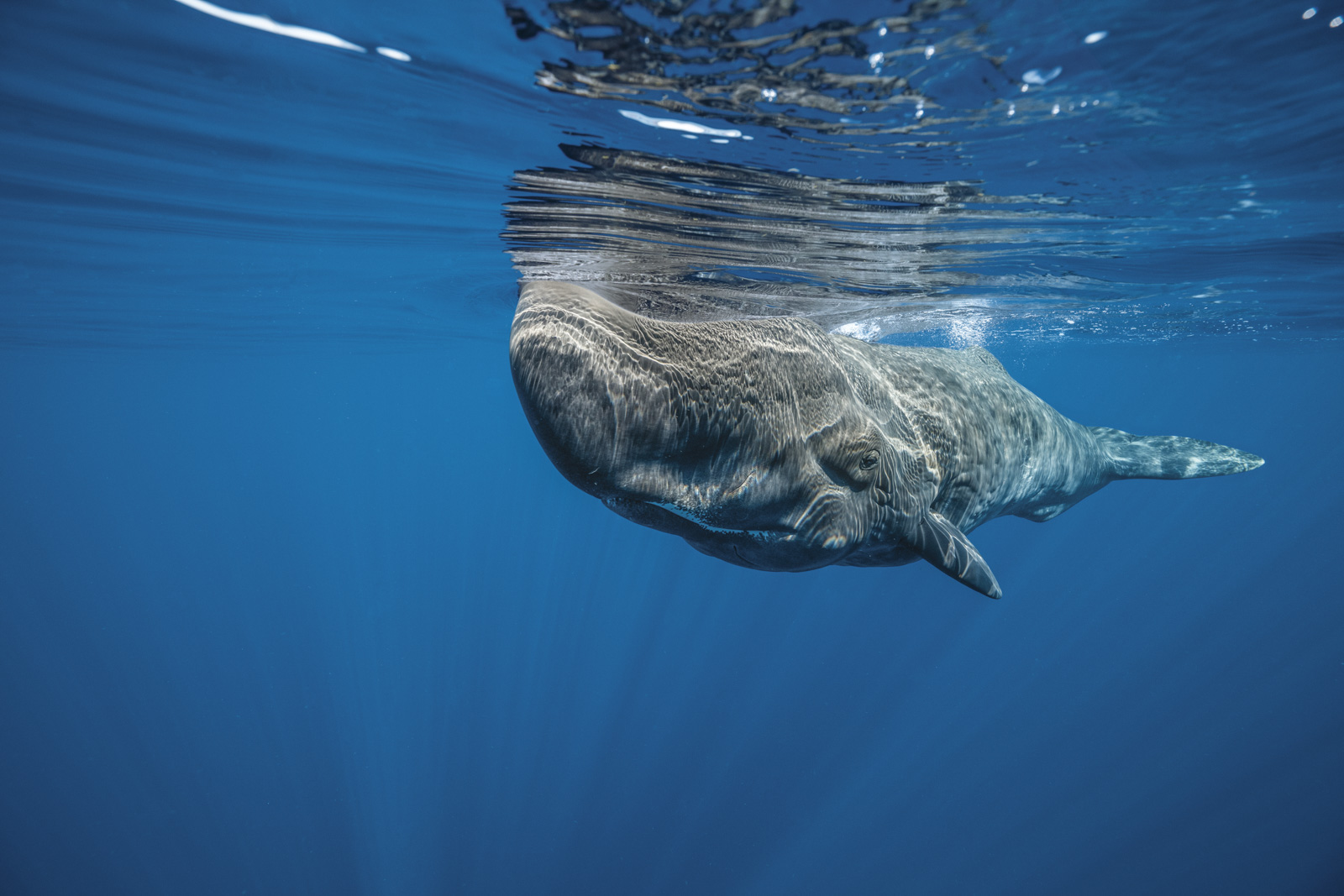
My beloved sperm whale calf in Dominica, July 2021
One of the loveliest animals I’ve ever had the privilege of spending time with…
The first day he/she swam right at me and bumped into me. Fairly frenetic, it nearly launched itself onto the swim platform. The second day he/she swam off quite fast on nearly every encounter. But the third day, she (I always like to think of marine mammals and turtles as shes!) actually waited for me, hanging immobile and gentle at the surface, and allowed me close — to photograph her — for several brief minutes before letting herself slowly sink vertically, her head pointing skywards, watching me the entire time.
Sperm whales sleep with their heads pointing to the surface and tails to the seafloor.
It is incredibly rare, touching and more than memorable, to share such an experience with another creature. And while it sounds cliché, you actually feel like it changes you…
Cetaceans are highly intelligent and social — and sperm whales have the biggest brain in the whole animal kingdom, six times the size of the human brain. So you can be a hundred percent sure that the animal in front of you is thinking, feeling or both.
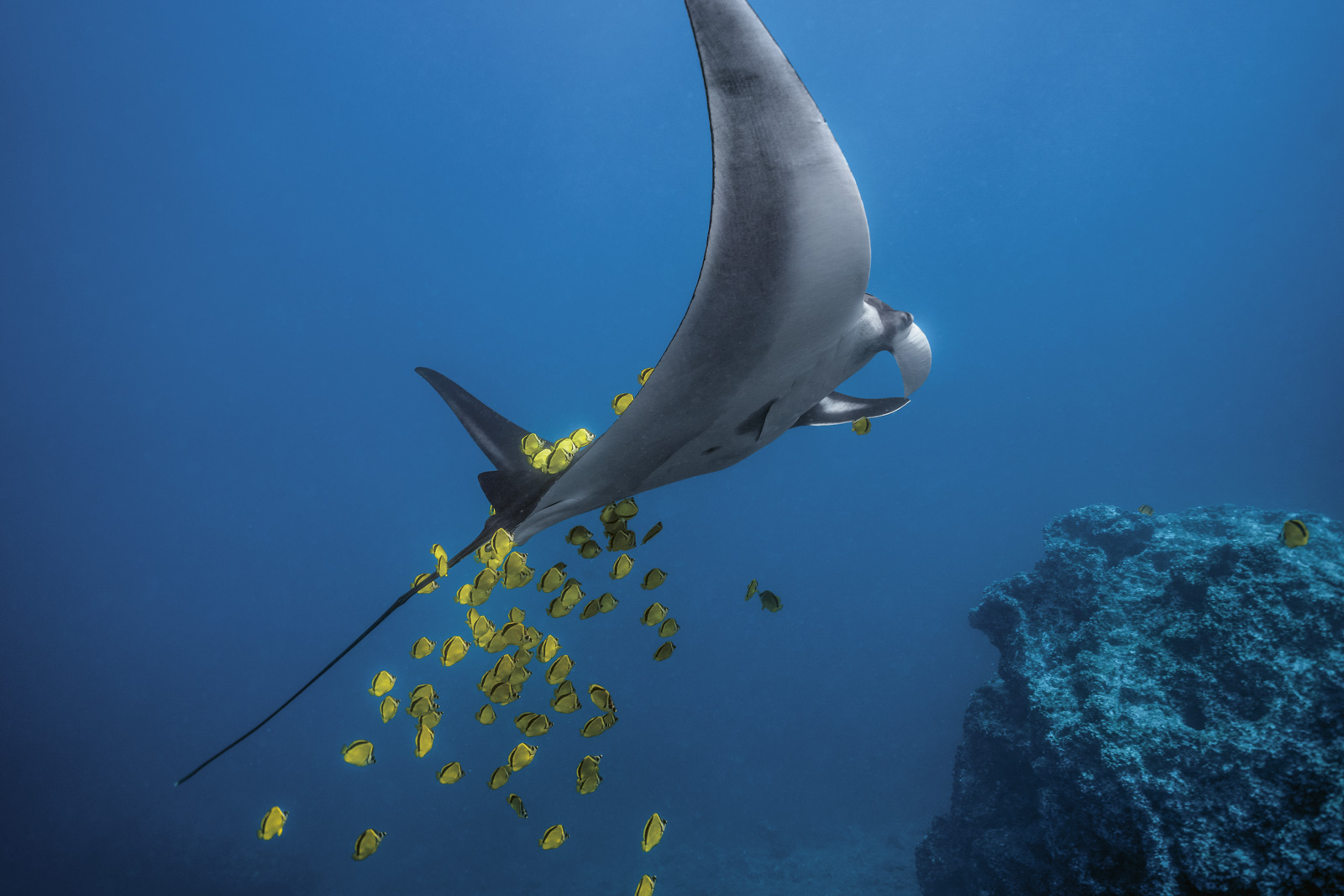
Barber fish, a yellow species of butterflyfish, falling away and dispersing like golden nuggets as an oceanic manta ray rises above and away from a cleaning station
Isla de la Plata, Ecuador, September 2021
There are five species of fish that are known to “clean” the mantas. The list includes king angelfish; but by far the most common cleaners we saw were these barber fish.


